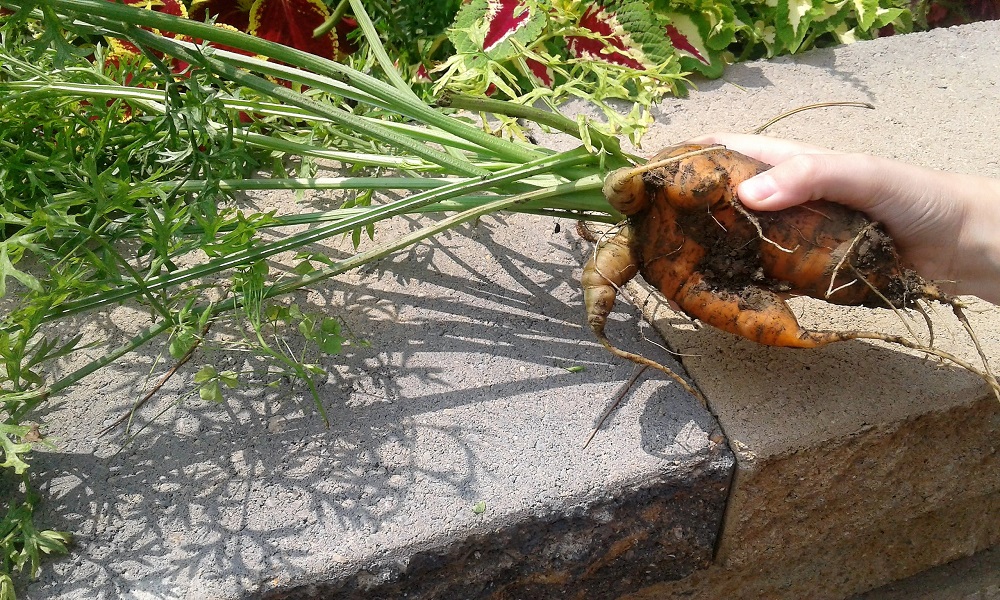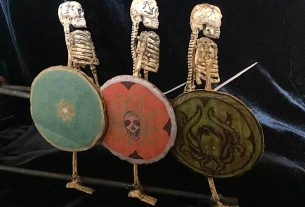
I’m notoriously against dichotomies when it comes to people. Objects, on the other hand, are fun to sort. There are games based on the concept of using dichotomies to identify objects: Twenty Questions, and all its spinoffs, like this Hedbandz game my kids have. Through a series of yes or no questions, you gradually narrow down everything in the world to one specific thing. In less than twenty such dichotomies, at that!
Plant taxonomies are the Twenty Questions of gardening. Or better yet, a Choose Your Own Adventure book, except you don’t have to worry about choosing wrong and getting shoved off the Statue of Liberty by an art thief. The right answer to each question is there right in front of you: you just have to follow the answers to figure out what they mean.
My grandfather was a tree surgeon. If you came anywhere near a tree with him, he’d immediately rattle off its common name, its Latin name, and a story about one such tree he once knew before you even had a chance to ask. My mother, his daughter, will do the same with just the common tree names sometimes, and I’ve often felt a little guilty about how little of it stuck in my own head. I know obvious things, like the difference between an oak and a maple and a sycamore, but other times I stare at trees thinking, I should know this. But in a materials packet for my college biology class, there was a tree taxonomy. “Does your tree have board leaves or needles? Turn to page two or five.” I loved that thing. I saved those pages and stapled them together to keep forever on my bookshelves long after the rest of my college materials had been recycled. Now I know I can name any tree I stumble upon, need be.
And now, I garden. That little tree taxonomy packet can’t begin to identify the plants I actually need to identify in my gardens. I wanted a bigger taxonomy, and I was kind of annoyed how hard it was to find one that would do.
All the plant identification apps seemed to focus on snapping a picture and having a community of other people tell you what they thought it was. Or you just had to scroll through other pictures, looking for something that looked like yours. Or you had to pay to have an expert tell you. All I wanted was a nice app to walk me through a nice organized taxonomy!
I finally found one that knew what I was after: Go Botany, a website created by the New England Wild Flower Society. Technically, I’m in the Mid-Atlantic, not New England, but that’s close enough that I still almost always find what I’m looking for.

The Simple Key and Full Key (I have yet to tell the difference; maybe the Full Key gives you more results?) have you choose a type of plant based on the most obvious features, then a subtype (which might take a couple of tries—it can be hard to choose some traits from, say, only a few leaves on a seedling), then you can keep answering more specific questions based on what you can observe to narrow down the results, until you see a plant you recognize. There’s also a truly dichotomous key, but this requires the user to be pretty well-versed in botany (more than me, at least, and my grandfather was a tree surgeon).
I’ve spent this summer rushing to identify every unidentified plant I spot. It’s a little bit my ADHD and that I sometimes forget what I planted places. Even when I write them down (sometimes I forget to write them down). But I’m also a big fan of volunteers: sometimes I didn’t mean to plant something at all, but it’s awesome where it is, like this big fat carrot that grew out of a crack in a stone walkway.

I recognize carrot seedlings, though. I didn’t need the Go Botany app for that. But other things might be quite nice flowers, or a vegetable from a dropped seed. I don’t want to weed weeds that aren’t actually weeds.
Even when I know a plant is a weed, I look it up on Go Botany just so I know what it’s called. This led to fun stuff like finding Scarlet Pimpernel all through the garden. “Cool!” says me. “Um, scarlet pimpernel is an extremely invasive weed that you need to get rid of immediately,” says the Go Botany page.* “Yeah, but it’s an extremely invasive weed that just HAPPENS to be the ORIGINAL CAPED CRUSADER,” I retort at it.
And then I hit this huge plant at the top of the post. I thought it was a daisy at first, because I did have daisies growing there once. It’s not. I thought it might be sunflowers, sprouted from birdseed, but it’s not that, either. Go Botany refuses to solve this mystery for me. Perhaps it is indeed a plant that’s in the Mid-Atlantic but not New England.
I know very well it’s a weed, and a huge one at that. But I’m just waiting for it to bloom before I dig it up. Maybe the flowers will make the answer more obvious. Now that I know the names of every other plant in my yard, I just can’t bear this one staying a mystery.
*Not an exact quote.


Did you find out what the mystery plant was? I think I have the same thing in my Maryland yard. It just popped up this year, nothing similar planted nearby this year or previously.
I am in New England and have the mystery plant in my yard, too! Thanks for sharing this app. I love the New England Wildflower Society… You should totally visit their Garden in the Woods if you’re ever up this way!
I was hoping they’d be easier to identify once they were in bloom, but my husband went and chopped them down yesterday. “But they were almost in bloom!” “That’s why I chopped them NOW!”
Ah, I saw Maryland and figured it must indeed be just a mysterious mid-Atlantic plant, but if it HAS made it to New England– who is this invader? WHO? Should we fear it?
I kind of wondered if it was from impure bagged garden soil, except the places it’s growing in are places I DIDN’T add soil to this year.
IN CASE YOU’VE GOT COMMENT NOTIFICATIONS TURNED ON:
I think I solved the mystery! Not of what the plant IS, though that should be easy enough once I bother to investigate further, but where it came from: BIRDSEED. This year I’m still finding it scattered in random places, but it’s growing thickest–and shallow, as if the seed was just lying on the surface– right under where I’ve had one of those sock-like birdseed feeders hanging for the past year or so. It’s a thin brown seed the birds pick out of the holes in the sock thing?